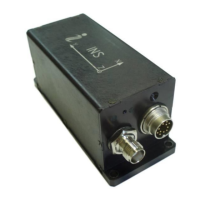INS
GUI User’s Manual
Inertial Labs, Inc
TM
Address: 39959 Catoctin Ridge Street, Paeonian Springs, VA 20129 U.S.A.
Tel: +1 (703) 880-4222, Fax: +1 (703) 935-8377 Website: www.inertiallabs.com
151
Decoded Galileo INAV ephemeris
Decoded Galileo FNAV ephemeris
Decoded Galileo ephemeris
Position at time of mark input event
Compressed version of the RANGE log
(Satellite range information)
Notes:
1. INS-DL supports only logs marked with
(1)
in the Table 12.1.
2. MARK2POS and MARK2TIME logs are not used in post processing, but they can
be added to the raw GNSS data if input marks are enabled (“Mark inputs control”
checkbox is checked in the “GNSS receiver” tab of the “Devices options” menu
item on Fig. 4.4). MARK2POS and MARK2TIME logs appear when a pulse is
detected at mark input (see section “13.3. INS operation with LiDAR”).
Frequency of the synchronous logs logging is changeable and is specified in
“Data rate” field (see section “4.2.2. “GNSS receiver” tab of “Devices
options…” window for details). Note the standard COM-port baud rate
115200 bps can provide frequency of GPS L1 raw data up to 5 Hz. Raw
data with higher frequency, L1/L2, using GPS + GLONASS may contain
gaps, so it is necessary to use USB port on host computer and to increase
COM Port baud rate. Set 921600 bps baud rate to provide maximum 20 Hz
GNSS raw data output. Please contact the Inertial Labs about details.
For raw GPS data recording from receiver an external program
GNSS_Reader can be used. The GNSS_Reader is supplied with the
“Inertial Labs INS GUI” software.

